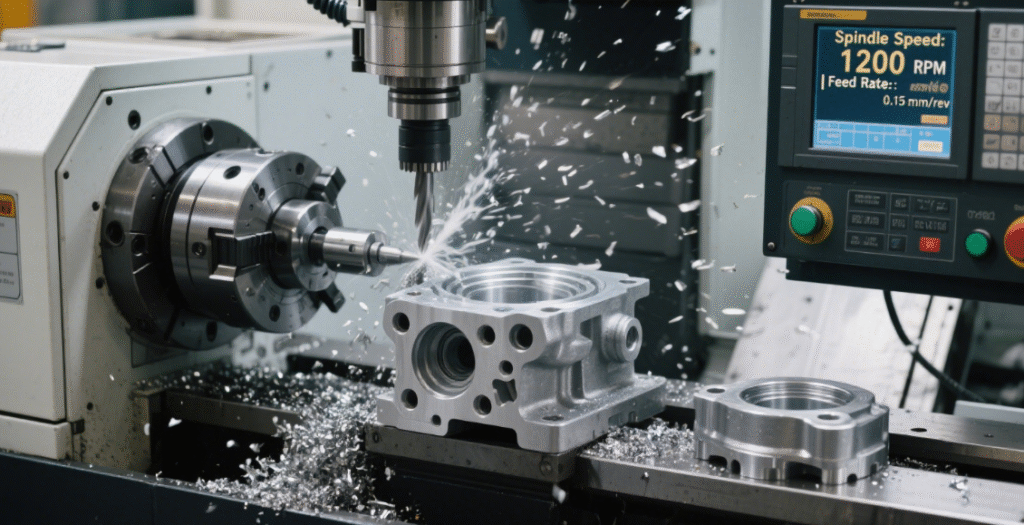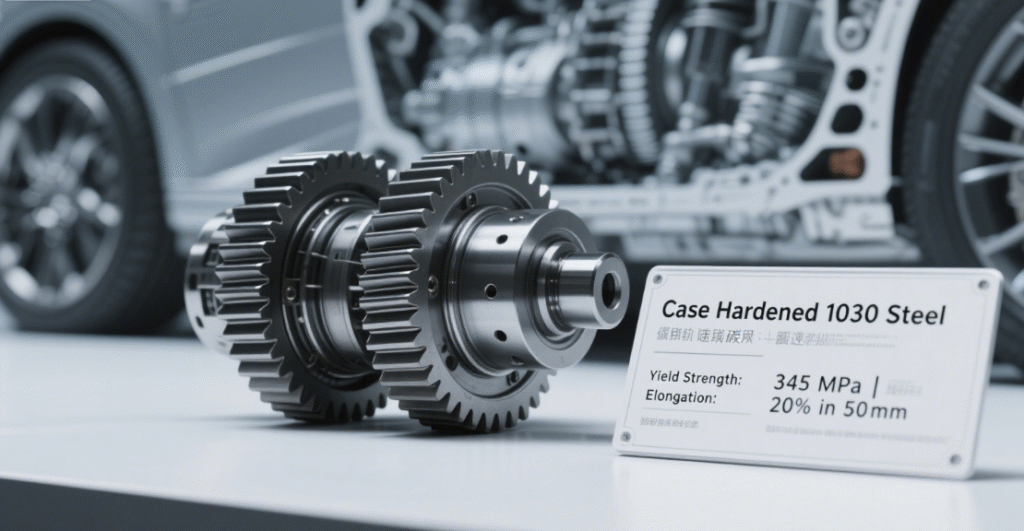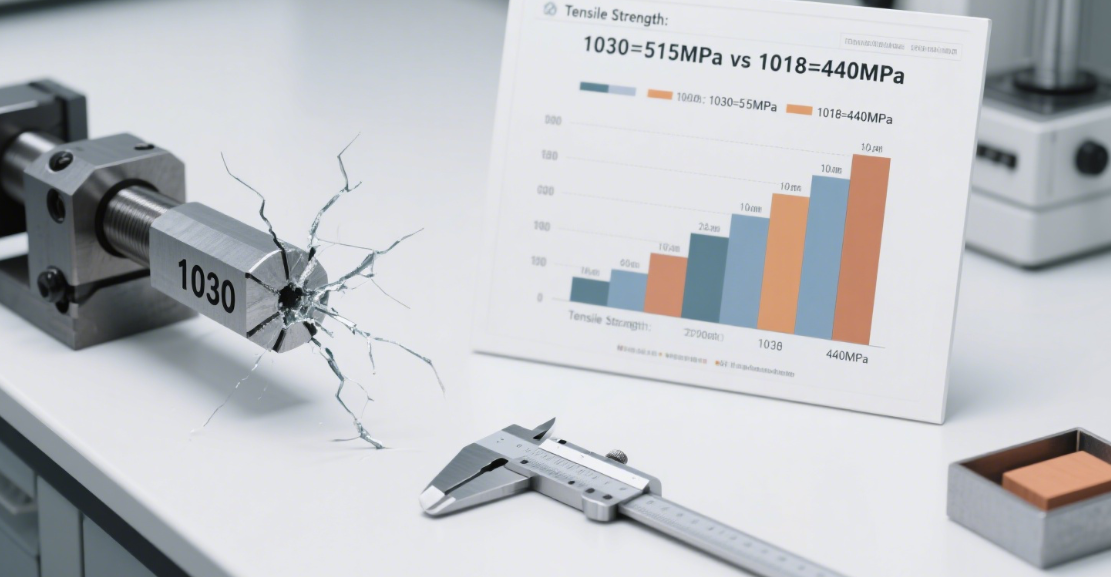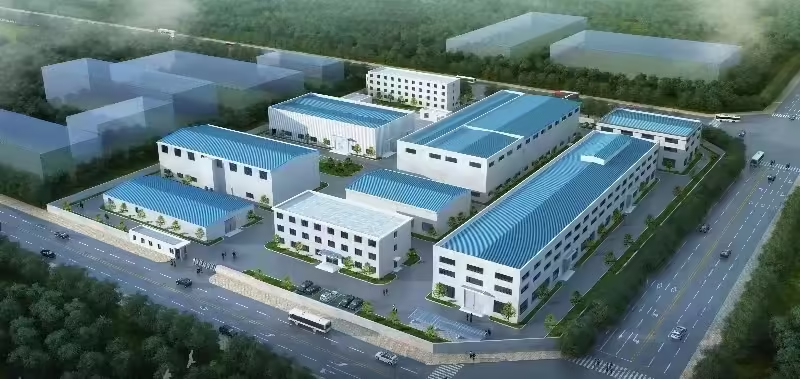¿Qué es el acero al carbono 1030? Una guía completa
Tabla de contenido
Introducción
1030 carbon steel is a high-carbon steel alloy, known for its moderate hardness y high strength, making it a versatile material for a wide range of industrial applications. With a carbon content of approximately 0.30%, it strikes a balance between the softness of low-carbon steels and the hardness and strength of medium-carbon steels. This balance makes 1030 steel particularly useful in applications where strength and hardness are required but without the brittleness that comes with higher-carbon steels.
In this comprehensive guide, we will explore what 1030 carbon steel is, its key properties, its applications in various industries, and its performance in casting and heat-treated conditions. Additionally, we will dive into the advantages and considerations of using 1030 steel in manufacturing processes.
What is 1030 Carbon Steel?

1030 carbon steel is a member of the SAE (Society of Automotive Engineers) steel grade classification system. It is categorized as a high-carbon steel, with a carbon content of around 0.30%, which makes it stronger and harder than low-carbon steels like 1018 but more machinable than higher-carbon steels such as 1045 or 1060. The relatively higher carbon content contributes to its strength, while maintaining enough ductility for forming and machining.
This steel alloy is widely used in applications requiring moderate strength and good wear resistance, especially when parts need to be hardened or tempered to improve mechanical properties.
The chemical composition of 1030 carbon steel typically includes:
- Carbono (C): 0.28% – 0.34%
- Manganeso (Mn): 0.60% – 0.90%
- Fósforo (P): 0.04% max
- Azufre (S): 0.05% max
1030 carbon steel is used in applications that require strength, durability, and the ability to withstand moderate stress and wear.
Key Properties of Acero al carbono 1030
Strength and Hardness
One of the defining characteristics of 1030 carbon steel is its high strength y moderate hardness. This is due to the higher carbon content compared to low-carbon steels. The tensile strength of 1030 steel typically ranges from 570 to 700 MPa (82,650 to 101,500 psi), depending on the heat treatment applied.
Mientras 1030 steel offers greater strength than lower-carbon steels, its hardness is also moderate, making it ideal for parts that need strength without excessive brittleness. In its normal annealed state, the steel has a Brinell hardness rating of approximately 160-180 HB, but this can be increased through processes like quenching y tempering, which allow the steel to achieve higher levels of hardness for specific applications.
Machinability and Formability
1030 carbon steel is machinable y formable, though its higher carbon content makes it more challenging to work with compared to lower-carbon steels. It can be readily turned, drilled, milled, y ground to produce precision components. The steel maintains good formability, allowing it to be bent or shaped without significant cracking or deformation.
The material’s machinability, however, can be affected by its hardness y work-hardening tendency. For this reason, cutting speeds and tooling may need to be adjusted, particularly when machining hardened or heat-treated parts. But in general, 1030 steel is still easier to machine than higher-carbon steels, such as 1045.
Soldabilidad
1030 carbon steel has good weldability when compared to higher-carbon steels, thanks to its moderate carbon content. It can be welded using conventional methods like MIG, TIG, y Stick welding, with appropriate preheating and post-weld heat treatment to avoid issues such as cracking.
However, welding 1030 carbon steel requires attention to the material’s heat sensitivity, especially when working with thicker sections. The heat from welding can induce stresses that could lead to cracking or distortion if not managed properly. In some cases, post-weld heat treatment may be required to relieve internal stresses and improve the overall strength of the welded joint.
Resistencia a la corrosión
Mientras 1030 carbon steel is not inherently corrosion-resistant, it can be protected through various coating methods like galvanization o painting. These coatings help protect the material from the damaging effects of moisture, air, and other corrosive elements.
Without these protective coatings, 1030 steel will corrode over time when exposed to the elements, especially in environments with high humidity or salt content. In situations where corrosion resistance is critical, consider alloying the steel or using surface treatments like phosphating o electroplating.
Applications of 1030 Carbon Steel

1030 carbon steel is widely used in various industrial applications, particularly when moderate strength and machinability are important. Below are some of the most common uses:
Mechanical Parts
1030 steel is used in the production of mechanical parts that require moderate strength and wear resistance, such as gears, shafts, y spindles. Its ability to be hardened and tempered makes it particularly useful for parts that need to maintain a balance between toughness and durability under moderate load conditions.
Componentes automotrices
In the automotive industry, 1030 carbon steel is used for manufacturing various components like axles, brake shafts, y steering linkages. These parts require a combination of high strength, wear resistance, and machinability, which makes 1030 an excellent choice for these applications.
Tooling and Dies
Due to its ability to be heat-treated to increase hardness, 1030 steel is also used in the production of tools y dies. 1030 carbon steel is commonly used for making components like cutting tools, molds, y die inserts. These tools require a good combination of hardness for wear resistance and toughness to withstand the stresses of daily operation.
Componentes estructurales
1030 steel is also used in structural applications, such as making frames, brackets, y supports. The steel’s moderate strength makes it suitable for parts that are not exposed to excessive loads or wear but still require durability and ease of machining.
1030 Carbon Steel in the Casting Industry
In the casting industry, 1030 carbon steel is commonly used for fundición components that require moderate strength and hardness. It can be cast into various forms using techniques like fundición en arena o fundición de precisión. After casting, 1030 steel is typically heat-treated to enhance its properties, improving the final component’s strength, wear resistance, and overall performance.
Some casting applications of 1030 carbon steel include:
- Pump components: Such as pump shafts y impellers, which require strength and wear resistance.
- Machine parts: Like gears, sprockets, y bearings that must endure moderate stress.
- Automotive castings: Used in engine components y brackets.
El heat treatment of 1030 steel can further enhance its mechanical properties by quenching y tempering, making it well-suited for high-performance casting applications.
Table: Key Properties and Applications of Acero al carbono 1030
| Propiedad | Details |
|---|---|
| Contenido de carbono | 0.28% – 0.34% |
| Resistencia a la tracción | 570 – 700 MPa (82,650 – 101,500 psi) |
| Hardness | 160 – 180 HB |
| Maquinabilidad | Good, though harder than low-carbon steels |
| Soldabilidad | Good, requires proper heat control |
| Resistencia a la corrosión | Moderate, requires coatings or treatments |
| Aplicaciones | Mechanical parts, automotive components, tooling, structural parts |
| Casting Suitability | Suitable for sand and investment casting |
Advantages of 1030 Carbon Steel

- Strength and Durability: 1030 steel provides good strength y moderate hardness, making it suitable for a wide range of applications.
- Maquinabilidad: The steel can be easily machined to create parts with precise tolerances, contributing to reduced manufacturing costs.
- Soldabilidad: It offers good weldability, especially compared to higher-carbon steels, which can be more difficult to weld.
- Heat Treatability: 1030 steel can be hardened y tempered to increase strength and wear resistance, providing versatility for different applications.
Conclusión
1030 carbon steel is a versatile, high-carbon steel alloy that offers a combination of strength, machinability, y heat treatability, making it ideal for a wide range of industrial applications. While it is not as hard as other higher-carbon steels, its moderate hardness and excellent weldability make it a go-to choice for parts that require durability, strength, and ease of fabrication. Whether you are manufacturing gears, shafts, o tooling, 1030 steel provides a reliable and cost-effective solution for your needs.
PREGUNTAS FRECUENTES
What is the difference between 1030 and 1045 carbon steel?
The main difference between 1030 y 1045 carbon steel is the carbon content. 1045 contains 0.45% carbon, making it stronger and harder than 1030, but also more difficult to machine and weld. 1030 steel offers moderate strength and is easier to work with, making it ideal for applications that don’t require the extreme hardness of 1045.
Poder 1030 carbon steel be heat treated?
Sí, 1030 steel can be heat-treated to increase its hardness and strength. It can be quenched y tempered to improve its mechanical properties, especially for high-stress applications.
Is 1030 carbon steel resistant to corrosion?
No, 1030 carbon steel is not naturally corrosion-resistant. It can rust if exposed to moisture and air. Protective coatings like galvanization, painting, o powder coating are recommended for corrosion resistance.
What industries use 1030 carbon steel?
1030 carbon steel is used across various industries, including automotive, construction, machinery, and tool manufacturing. It is often found in mechanical parts, automotive components, tools, y structural applications.
Manténgase conectado con nosotros

¡Gracias por leer! Esperamos que este blog te haya brindado información valiosa e inspiración sobre techos con paneles acústicos. Si disfrutaste del contenido y quieres estar al día de las últimas tendencias, consejos y novedades, nos encantaría conectar contigo en redes sociales.
📘 Síguenos en Facebook: Shanghai Leierwo Industria Comercio Co., Ltd.
Únase a nuestra creciente comunidad donde compartimos consejos de expertos, aspectos destacados de los productos y debates interactivos con profesionales y entusiastas del diseño de todo el mundo.
Sigamos conversando, ¡nos vemos allí!
Categorías de productos
- Piezas de válvulas
- Piezas de la bomba de agua
- Piezas de la caja de cojinetes
- Piezas de fundición a presión
- Productos para bombas de acero inoxidable
- Productos para bombas de hierro fundido
- Piezas de válvulas para automóviles
- Recambios para automóviles
- Piezas de válvulas para uso civil
- Piezas de bomba de vacío KF

